Optical Communication Systems
Data is displayed for academic year: 2023./2024.
Course Description
The course gives detailed account of the phenomena related to the transmission of an optical electromagnetic wave. Modulation and multiplexing methods suitable for achieving the desired optical communication system are discussed. The operating principles of optoelectronic components are discussed in detail. The restrictions imposed by particular components in the communication chain are considered (optical fibers, photo-detectors, optical amplifiers, laser sources). Examples of design of optical communication links are given. Different types of optical networks, from access and distribution networks to WDM systems and long-haul links, are discussed in detail. Restrictions of particular optical systems are explained. An overview of components applicable to different kinds of optical networks is given. Fiber optic measurement techniques, optical network monitoring techniques, and measurement devices are considered. The detailed design of an optical link and of an optical network is also dealt with.
Study Programmes
University graduate
[FER3-EN] Control Systems and Robotics - profile
Elective course
(3. semester)
Elective courses
(1. semester)
[FER3-EN] Data Science - profile
Elective courses
(1. semester)
Recommended elective courses
(3. semester)
[FER3-EN] Electrical Power Engineering - profile
Elective courses
(1. semester)
(3. semester)
Learning Outcomes
- describe the physical method of wave propagation inside the fiber, describe the limitations of fiber data transmission
- select the communication window, laser type, fiber type and photodetector type, for realization of considered optical link
- select the modulation method and multiplexing method suitable for considered communication system
- estimate limitation on link length, determine the type and number of needed optical amplifiers and dispersion compensation method
- design optical communication systemss by taking into account numerous effects (dispersion, non-linearities, noise, optical amplifiers)
- select components for building optical communication networks
- design optical networks by taking into account network topology, protection capacity and wavelength assignment
- design access network with high capacity and flexibility
Forms of Teaching
Lectures
--
Exercises--
Independent assignments--
Laboratory--
Grading Method
| Continuous Assessment | Exam | |||||
|---|---|---|---|---|---|---|
| Type | Threshold | Percent of Grade | Threshold | Percent of Grade | ||
| Laboratory Exercises | 50 % | 5 % | 50 % | 5 % | ||
| Homeworks | 50 % | 5 % | 0 % | 0 % | ||
| Mid Term Exam: Written | 0 % | 25 % | 0 % | |||
| Final Exam: Written | 0 % | 25 % | ||||
| Final Exam: Oral | 40 % | |||||
| Exam: Written | 0 % | 45 % | ||||
| Exam: Oral | 50 % | |||||
Week by Week Schedule
- Optical networks. Non-communication optical systems. Multiplexing in optical communication systems. TDM i WDM systems. Properties of DWDM amd CWDM systems. Evolution of optical networks.
- Single mode laser diodes (DFB and DBR). Frequency tunable lasers. Vertical-cavity surface-emitting laser (VCSEL).
- Optical modulation methods. Modulation schemes for high-speed systems: advantages and disadvantages. Direct modulation of LEDs and laser diodes.
- Noise sources in photodetecors. Determination of Bit Error Rate (BER). Receiver sensitivity.
- Principle of operation of optical amplifiers. Gain saturation. ASE noise in optical amplifier. Noise properties of optical amplifier cascade. Erbium-doped fiber amplifiers (EDFA). Semiconductor optical amplifiers (SOA). Raman amplifiers.
- Principle of operation of optical fibers. Optical fiber types, Geometric optics analysis of optical fibers. Modes in multimode fibers.
- Rigorous method of analysis of cylindrical fibers; Modes in optical fiber; Frequency dependence of the propagation constant and the number of modes, Losses in optical fibers; Infrared and ultraviolet absorption; Rayleigh scattering; Photonic crystal fibers
- Midterm exam
- Chromatic dispersion (material and waveguide dispersion). Polarization mode dispersion. Compensation of chromatic and polarization mode dispersion.
- Nonlinear effects: four-wave mixing, self-phase and cross-phase modulation. Stimulated Raman scattering. Stimulated Brillouin scattering.
- Fiber optic measurement techniques. Measurement devices. Optical network monitoring.
- Optical link design: loss budget and rise-time budget analysis. Power penalty evaluation. Power penalty analysis (finite extinction ratio, dispersion, crosstalk, etc.).
- Practical problems in the design and implementation of optical communication systems. Topology of optical networks. Access and core networks. Tendencies of development of optical networks: requirements to WDM with a large number of wavelengths, long-distance and high-speed transmission.
- Access and distribution optical networks. FTTx concept. Passive optical networks. TDM-PON and WDM-PON. Free-space optical communications. Standards and applications; Atmospheric impacts on quality of free-space optical links.
- Final exam
Literature
For students
General
ID 223055
Winter semester
5 ECTS
L3 English Level
L1 e-Learning
45 Lectures
0 Seminar
15 Exercises
10 Laboratory exercises
0 Project laboratory
0 Physical education excercises
Grading System
89 Excellent
76 Very Good
63 Good
50 Sufficient


 Pristupačnost
Pristupačnost

